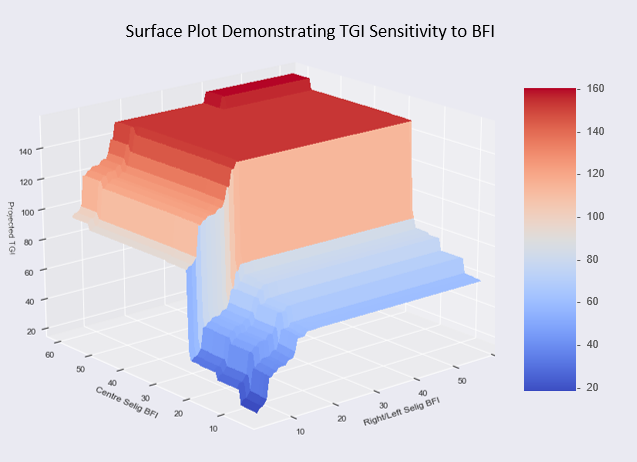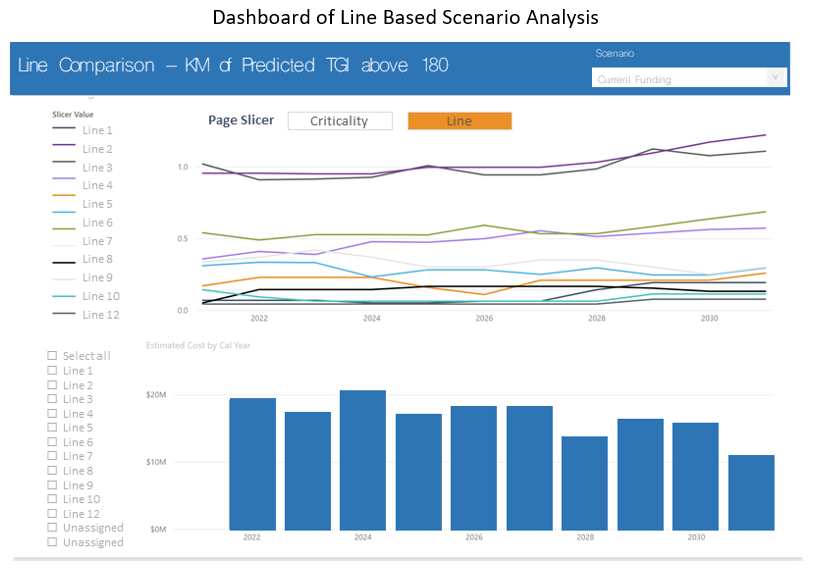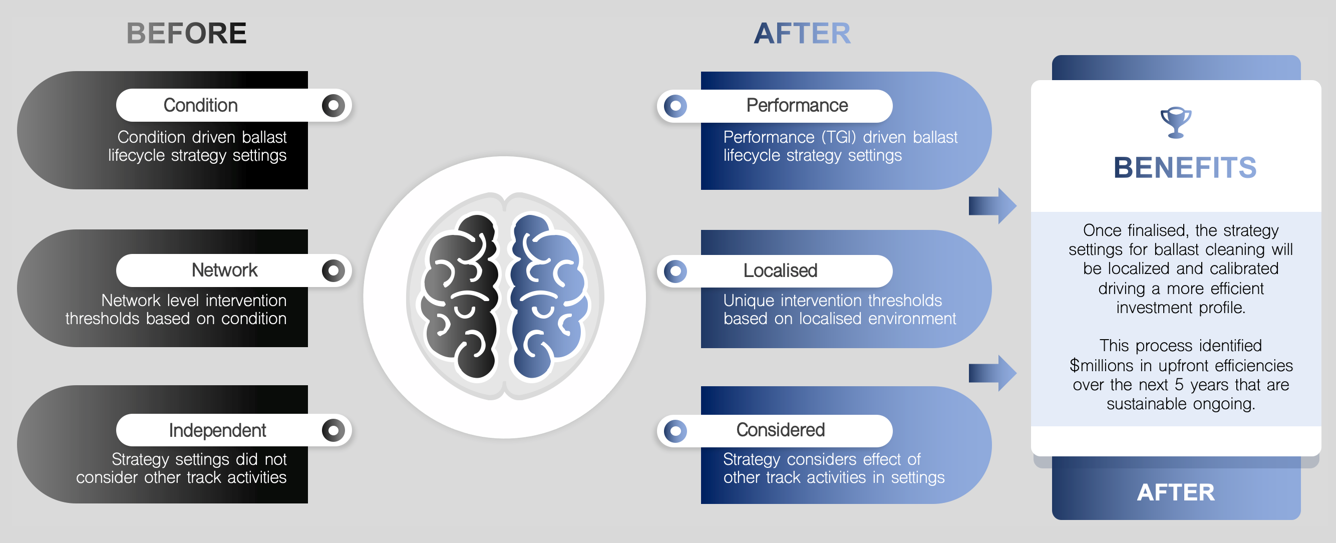Data Driven Decisions: Case Study
The Challenge
A major passenger rail client manages a significant network of aging track that requires constant monitoring to deliver safe, comfortable and reliable transportation services. Track maintenance plays a significant role in this objective making up as much as 25% of the maintenance and renewal budget.
Track renewal strategies were identified as an opportunity for improvement as the ballast strategies were driven by network level condition limits (Ballast Fouling) as a factor to sustain track performance.
These network level settings did not consider local environmental factors or other maintenance activities that were applied which play a significant role in understanding the impact of localised ballast condition on track performance.
Quarterbac was engaged to conduct analysis to understand any efficiency opportunities that may be achievable through more refined life cycle settings for the ballast cleaning program.
The aims of the analysis included:
- Conduct deep analysis on the relationship between Ballast condition and other parameters with regards to localised track performance
- Review the in-flight ballast maintenance program and understand the prevalence and relationship of maintenance actions across the network over recent years
- Review intervention thresholds and analyse the performance impact of alternative scenarios e.g. 10% ,15% ,20% reduction in funding or increasing intervention thresholds
- Present the forward impacts of these scenarios and profile the outputs in terms of cost / risk and performance by line
- Provide refined life cycle strategy settings for ballast maintenance across the network based on best choice scenario.
Complication
The disparate nature of the data required for analysis posed some interesting challenges with a total of 13 data sets with different resolutions and attributes included GPR, tamping records, defects, TSR records and MGT. Maintenance records were used over a three-year period to provide a good sample of data with cross-class interactions covering multiple disciplines considered within the analysis. Relevant operating parameters were identified through discussions with subject matter experts with specific data sets included in the analysis.

First Steps
Initial work focused on bringing all data sets into a single repository which involved exporting data from the various systems as well as writing scripts to extract data from various shared drives and SharePoint sites. A view was then formed on the maturity of each data source which informed recommendations to improve data quality and accessibility.
Basic data mining revealed some interesting observations. For example, the data showed that the effect of tamping on ballast that was rated at a TGI of greater than 150 was not as consistent as that rated below 150. This essentially highlighted a problem that required further investigation to improve the effectiveness of future tamping.
Further Analysis
A further example of the value of data mining was the identification of problematic characteristics in the design of the track that drove an increase in tamping frequency and/or repeat performance issues (TSRs).
This initial high-level analysis provided the opportunity for SMEs to validate the data by challenging whether the insights looked right and guide further analysis.
More detailed analysis involved building casual network models to detect and suggest relationships for further exploration and calibrating with SMEs. This was done through the application of machine learning which enables the identification of the strength of cause and effect relationships of input data on performance of ballast.

More detailed analysis involved building casual network models to detect and suggest relationships for further exploration and calibrating with SMEs. This was done through the application of machine learning which enables the identification of the strength of cause and effect relationships of input data on performance of ballast.
One of the outputs of this analysis was a validated predictor of TGI based on a clearer understanding of its relationship with ballast fouling in the centre selig and left/right selig. Predictions of TGI could be made on TGI measurements enabling more targeted intervention thresholds for ballast maintenance s to be identified.


Results
Refinements to maintenance strategies and funding scenarios without affecting portfolio risk levels.

Quarterbac delivered this over 12 weeks with 3 client SME staff. The process generated millions of dollars in future track lifecycle investments that could be re-applied to other parts of the network.
